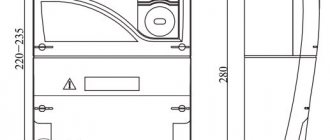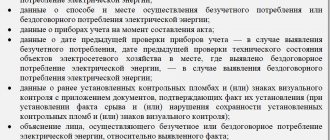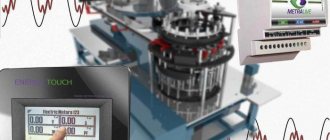Description
Electricity consumption is recorded using a meter at a certain tariff. However, in practice it is known that at certain times of the day energy consumption is more intense than at others. Therefore, organizations selling this resource enable consumers to switch to different tariffs depending on the time of day.
Tariff validity periods
The benefit of switching to three-tariff metering is that if the consumer distributes electricity consumption in such a way that the most energy-intensive actions are performed during the period with the minimum tariff, then he will be able to save on payments. It should be taken into account that night rates may differ from day rates by four times.
When using three-tariff metering, the highest cost of electricity will be at the time of day when its consumption is maximum. At half-peak consumption, the tariff will be less high, and during the night it will have a minimum value.
Types of counters
Approximate savings calculation
And the use of two-tariff devices will save on payments. After doing a little calculation, you can see what the savings will be. The average electricity consumption in a three-room apartment is 200 kW per month.
Household appliances are operating in normal mode, the electric meter is used at two tariffs, let’s assume that the operating appliances are turned on at 60% during the day and 40% at night. The power is distributed in this way, 120 kW during the day and 80 kW at night.
When using a single-tariff device in Moscow, you must pay:
When using a multi-tariff meter:
The savings will be 190 rubles. per month, and for the year 2280 rubles. Considering that the cost of a multi-tariff meter today is 3,000 rubles, the payback period will be a little more than a year.
In our calculations, we neglect the cost of installing and sealing the device. Since they are approximately the same with the installation of single-tariff accounting systems.
If you shift your focus on using electrical appliances at night, you can save even more. But if you analyze the table, you can see that in Kursk it is profitable to use such metering systems if you use electricity mainly only at night.
Advantages and disadvantages
When using this mode, there are the following advantages:
- If the consumer uses a three-tariff meter, he will be able to distribute electricity costs in such a way that the most energy-consuming actions are performed during the period when the minimum tariff is in effect.
- Since such a counter is more expensive than a regular one, the difference in price can be compensated by saving resource consumption.
- Such an electric meter will allow you to detect attempts of unauthorized electricity withdrawal.
Such a meter helps save money.
However, the option under consideration also has disadvantages:
- Some people use almost no electricity at all. In this case, the savings will also be insignificant.
- Some people cannot handle laundry, washing, dishes or cooking at night.
- Tariffs are becoming more expensive, and the tariff for a day zone may be higher than that used for a single-tariff meter. Therefore, the transition to a new payment system in some cases may be unprofitable.
- The relatively high cost of such a metering device.
You may be interested in this. Connection diagram E4
Important! The decision on the profitability of installing a three-tariff meter should be made taking into account the characteristics of the use of electricity and the possibilities of using the advantages of such an metering device.
One-rate tariff for electricity in Moscow
| from 01/01/2021 to 30/06/2021 | from 07/01/2021 to 12/31/2021 | |
| Indicator (consumer groups broken down by rates and differentiated by day zones) | Price (tariff) in rub./kWh | Price (tariff) in rub./kWh |
| 1. Urban population | ||
| Around the clock | 5,66 | 5,92 |
| 2. Population living in houses equipped with stationary electric stoves | ||
| Around the clock | 4,87 | 5,15 |
| 3. Population living in rural settlements and equivalent to them | ||
| Around the clock | 3,96 | 4.14 |
| 4. Gardening, gardening or dacha non-profit associations of citizens | ||
| Around the clock | 3,96 | 4.14 |
| 5. Consumers equal to the population purchasing electricity for use in outbuildings (cellars, sheds) | ||
| Around the clock | 5,66 | 5,92 |
Principle of operation
The day is divided into three billing periods. Separate records are kept for each of them. The cost of electricity is the sum of costs for all three types.
When calculating the T1 period, electricity consumption during periods of highest consumer activity is taken into account. It is believed that this occurs from 7 am to 9 pm minus the interval from 10 am to 5 pm. At this time the level of payment is maximum.
The time that corresponds to T2 is night. If electricity was consumed from 11 pm to 7 am, then it is paid in accordance with the minimum tariff. If you plan resource consumption in T2, this can maximize the level of savings.
The T3 period (half peak) refers to the early morning and part of the evening time. We are talking about the time from 10 to 17, as well as from 21 to 23 hours. At this time, the tariff is usually reduced by about 30% compared to the maximum.
Use of two-tariff metering devices
The exception is cottages and private houses, where, at the owner’s request, three-phase voltage can be connected. Let's consider how the use of multi-tariff devices allows you to save money if you install a single-phase two-tariff meter in your apartment.
When using single-tariff devices, the consumer pays a fixed fee for electricity throughout the day. It is different for each region. The highest fee is in Moscow; in the regions it is significantly lower. The table shows the current tariffs in different areas.
For comparison, the table shows prices for the two cities of Moscow and Kursk. It shows that using electricity at night is much more profitable.
This is done in order to reduce electricity consumption during peak loads of the power system. Which occurs in the morning from 7.00 to 10.00 and in the evening from 18.00 to 23.00.
To stimulate electricity consumption at night, a double tariff began to be applied. Modern household appliances allow you to work without human intervention with delayed start. These are washing machines and dishwashers that can be programmed to operate at night.
Time periods for tariffing
For 3 tariff electricity meters, tariffs are determined as follows.
When using three-tariff metering, night time begins at 23:00 and ends at 7:00 am. The rest of the day is divided into four parts: two periods with peak electricity consumption and two with half-peak.
Electricity is used the most during these times: late morning, afternoon and evening hours. At this time the maximum tariff applies. This happens from 10 to 17 and from 20 to 23 hours.
Taking readings
Semi-peak hours are from 7 am to 10 am and from 5 pm to 8 pm. At this time, the payment is reduced compared to the maximum, but remains higher than the nightly rate.
You might be interested in Simple voltage stabilizers
To determine how beneficial such metering is, it is necessary to take into account the characteristics of energy consumption in the house. This is worth considering if the following circumstances apply:
- They are predominantly nocturnal.
- A person comes home from work no later than 17:00 and falls into the half-peak charging period for electricity consumption.
- People in the house are used to getting up early and thanks to this, using the morning time for their needs.
- Electrical devices are used that require a lot of energy to operate (washing machine or washing machine, electric heating, heated floor or others).
If your daily routine does not allow you to take advantage of the capabilities of multi-tariff meters or if powerful devices are not used in your home, then switching to their use will provide insignificant savings.
Three-tariff meter installed outside the house
The differences between two- and three-tariff metering devices are as follows:
- A three-tariff electricity meter remembers the previous indicators that were transferred for accounting.
- A different number of tariffs are used.
In order to decide which meter is more profitable, a two-tariff or a three-tariff one, you need to carry out calculations in accordance with the characteristics of electricity consumption for each possible type of metering.
Types of multi-tariff meters and models
Modern multi-tariff electricity meters are divided into several types according to the number of tariff zones:
- two-tariff;
- three-tariff;
- four-tariff.
Two-tariff
A two-tariff meter is the most popular option for multi-tariff electricity metering devices in private houses and apartments. It records electricity consumption readings in two time zones - daytime (peak) and nighttime. At night, when the load on the power supply network decreases, it is much more profitable for the consumer to use powerful equipment. Also, reducing electricity consumption during the day has a beneficial effect on the environment, since power plants use many times less natural resources.
The most popular models of two-tariff electricity meters:
- Neva MT 124;
- ABB FBU-11205;
- Energy meter CE102M.
The domestic meter Neva MT 124 is designed to operate in a single-phase 220 V network, with a maximum current of 60 A. The device is popular because of its affordable price and reliability. The internal “filling” of the device is well protected from moisture and dust. The only drawback of the Neva MT 124 meter is the large size of the device.
The two-tariff meter FBU-11205 from the Swedish company ABB competes well with domestic analogues. This device is intended for installation in a single-phase network for domestic or industrial use with a maximum load current of 80A. The FBU-11205 is equipped with an IR port that makes it easy to take readings from the device. The build quality is very high and meets the IP20 protection rating. The obvious disadvantage of the meter is its high price (about 6,000 rubles).
The two-tariff single-phase electric meter Energomera CE 102M is also reliable and durable. The maximum network current is 60 A. The device is mounted on a DIN rail, but there are modifications for mounting with screws. The price of the device is low (about 2000 rubles), which is why the CE 102M model is quite popular.
Three-tariff
To account for electricity, a three-tariff system was introduced, with the daytime time zone divided into peak hours. The period 7:00 - 10:00, as well as 17:00 - 21:00 is the peak load. This is explained by the fact that residents get ready for school and work in the morning, using home appliances.
After 17:00, people return home and turn on household appliances, which also increases the load on the network. During these periods, the cost of one kilowatt is significantly higher. If you are willing to use electrical appliances minimally at this time, then three-tariff meters will reduce your electricity costs.
Models of three-tariff meters:
- Mercury – 200.02;
- Matrix NP 73E;
- Neva MT 324.
Meter Mercury - 200.02 is one of the best electricity metering devices. Thanks to the built-in PLC modem, the device is able to synchronize readings with an automatic accounting system. The built-in memory of the device stores data on consumed electricity over the past few months. The maximum permissible current is 60 A. The disadvantage of Mercury 200.02 is its large size. Plus – affordable price (about 2000 rubles)
Matrix NP 73E is a multi-tariff three-phase electric meter with advanced capabilities. The device is capable of transmitting information to the server of the electricity supplier thanks to the PLC interface. The model has the function of recording accidents, various sensors, as well as other additions. The disadvantage is the high cost (about 12,000 rubles) and large dimensions.
The three-tariff meter Neva MT 324 AOS26 is one of the most reliable. The device is well protected from moisture, dust, and strong magnetic fields. The maximum current for which the meter is designed is 60 A. The manufacturer provides a five-year warranty on the model, and its service life can reach 30 years. Costs about 2500 rubles.
Four-tariff
In some regions there is a four-tariff accounting system, but it is intended only for large industries. There is no point in it for domestic purposes, so electricity suppliers do not introduce this system in residential buildings.
The four-tariff meter Mercury 231 AT-01 has an affordable price and good build quality. Thanks to this, the device is often purchased for production workshops and shops. The internal memory capacity is capable of storing information about data for the last year, which makes it possible to check readings in controversial situations.
Types of three-tariff meters
As you know, you can install two main types of meters: induction and electronic. The former are not used as multi-zone metering devices. Electronic can be single- or three-phase. This depends on whether you are using power tools or three-phase powered appliances. In most cases, it is sufficient to use a single-phase meter.
To take readings you need to press the button
Tariff for two zones (peak and half-peak) for electricity in Moscow
| from 01/01/2021 to 30/06/2021 | from 07/01/2021 to 12/31/2021 | |
| Indicator (consumer groups broken down by rates and differentiated by day zones) | Price (tariff) in rub./kWh | Price (tariff) in rub./kWh |
| 1. Urban population | ||
| Daytime zone (peak and half-peak) | 2,32 | 2,48 |
| Night zone (peak and half-peak) | 6,51 | 6.81 |
| 2. Population living in houses equipped with stationary electric stoves | ||
| Daytime zone (peak and half-peak) | 1,63 | 1.74 |
| Night zone (peak and half-peak) | 5,60 | 5,92 |
| 3. Population living in rural settlements and equivalent to them | ||
| Daytime zone (peak and half-peak) | 2,06 | 2,20 |
| Night zone (peak and half-peak) | 4,55 | 4.76 |
| 4. Gardening, gardening or dacha non-profit associations of citizens | ||
| Daytime zone (peak and half-peak) | 2,32 | 2.48 |
| Night zone (peak and half-peak) | 4,55 | 4.76 |
| 5. Consumers equal to the population purchasing electricity for use in outbuildings (cellars, sheds) | ||
| Daytime zone (peak and half-peak) | 2,32 | 2,48 |
| Night zone (peak and half-peak) | 6,51 | 6.81 |
One-rate electricity tariff for the Moscow region
| from 01/01/2021 to 30/06/2021 | from 07/01/2021 to 12/31/2021 | |
| Indicator (consumer groups broken down by rates and differentiated by day zones) | Price (tariff) in rub./kWh | Price (tariff) in rub./kWh |
| 1. Urban population | ||
| Around the clock | 5,73 | 5,93 |
| 2. Population living in houses equipped with stationary electric stoves | ||
| Around the clock | 4,01 | 4,29 |
| 3. Population living in rural settlements and equivalent to them | ||
| Around the clock | 4,01 | 4,15 |
| 4. Gardening, gardening or dacha non-profit associations of citizens | ||
| Around the clock | 5,73 | 5,93 |
| 5. Consumers equal to the population purchasing electricity for use in outbuildings (cellars, sheds) | ||
| Around the clock | 5,73 | 5,93 |
Pros and cons of the three-tariff accounting system
What are the benefits of three-tariff meter tariffs? With proper use of electricity, savings are observed over time. Savings are legal, without illegal methods that entail shutdowns and fines. In addition, modern meters store data in memory and on the display for the entire period of use. Even if the receipt is lost, nothing bad will happen. And most importantly, globally the load on power plant equipment is equalized, fuel is saved in production and the amount of harmful emissions into the atmosphere is reduced.
Among the disadvantages of three-tariff accounting, we note:
- inconvenience of using household appliances at night;
- the increase in the cost of electricity during peak hours will not allow you to pay for the device if your network is loaded at this time;
- if suddenly the supplier revises the tariffs of a three-tariff meter and increases the user’s fee, the payback of the device will have to be recalculated.
Thus, it is necessary to take a balanced approach to the task of choosing a three-tariff electricity meter.
Tariff for three zones (peak, half-peak, night) for electricity in Moscow
| from 01/01/2021 to 30/06/2021 | from 07/01/2021 to 12/31/2021 | |
| Indicator (consumer groups broken down by rates and differentiated by day zones) | Price (tariff) in rub./kWh | Price (tariff) in rub./kWh |
| 1. Urban population | ||
| Peak zone | 2,32 | 2,48 |
| Half-peak zone | 5,66 | 5,92 |
| Night zone | 6,79 | 7,10 |
| 2. Population living in houses equipped with stationary electric stoves | ||
| Peak zone | 1,63 | 1.74 |
| Half-peak zone | 4,87 | 5.15 |
| Night zone | 5,84 | 6,18 |
| 3. Population living in rural settlements and those equivalent to them. | ||
| Peak zone | 2,06 | 2.20 |
| Half-peak zone | 3,96 | 4.14 |
| Night zone | 4,75 | 4.97 |
| 4. Gardening, gardening or dacha non-profit associations of citizens | ||
| Peak zone | 2,32 | 2.48 |
| Half-peak zone | 3,96 | 4,14 |
| Night zone | 4,75 | 4.97 |
| 5. Consumers equal to the population purchasing electricity for use in outbuildings (cellars, sheds) | ||
| Peak zone | 2,32 | 2,48 |
| Half-peak zone | 5,66 | 5,92 |
| Night zone | 6,79 | 7,10 |
Tariff for two zones (peak and half-peak) for electricity in the Moscow region
| from 01/01/2021 to 30/06/2021 | from 07/01/2021 to 12/31/2021 | |
| Indicator (consumer groups broken down by rates and differentiated by day zones) | Price (tariff) in rub./kWh | Price (tariff) in rub./kWh |
| 1. Urban population | ||
| Daytime zone (peak and half-peak) | 6,59 | 6,82 |
| Night zone (peak and half-peak) | 2,52 | 2,65 |
| 2. Population living in houses equipped with stationary electric stoves | ||
| Daytime zone (peak and half-peak) | 4,61 | 4,93 |
| Night zone (peak and half-peak) | 1,76 | 1,91 |
| 3. Population living in rural settlements and equivalent to them | ||
| Daytime zone (peak and half-peak) | 4,61 | 4,77 |
| Night zone (peak and half-peak) | 1,76 | 1,85 |
| 4. Gardening, gardening or dacha non-profit associations of citizens | ||
| Daytime zone (peak and half-peak) | 6,59 | 6,82 |
| Night zone (peak and half-peak) | 2,52 | 2,65 |
| 5. Consumers equal to the population purchasing electricity for use in outbuildings (cellars, sheds) | ||
| Daytime zone (peak and half-peak) | 6,59 | 6,82 |
| Night zone (peak and half-peak) | 2,52 | 2,65 |
Electricity rates for three-tariff devices
Tariffs for 3-tariff electricity meters are formed taking into account the region and type of premises in which the consumer lives. Let's compare rates using the example of Moscow (* rates are indicated for the first half of the year without taking into account their increase by 1.7% due to the increase in VAT).
| Room type | Tariff type | Tariff subtype | Rate, rubles |
| Gasified urban houses | Single | 5,38 | |
| Two-part | Peak zone | 6,19 | |
| Night | 1,92 | ||
| Three-zone | Peak | 6,46 | |
| Half Peak | 5,38 | ||
| Night | 1,92 | ||
| Residential premises with electric heating systems or electric stoves | Single | 4,3 | |
| Two-part | Peak zone | 4,95 | |
| Night | 1,35 | ||
| Three-zone | Peak | 5,16 | |
| Half Peak | 4,30 | ||
| Night | 1,35 | ||
| Other types of premises | Single | 5,38 | |
| Two-part | Peak zone | 6,19 | |
| Night | 1,92 | ||
| Three-zone | Peak | 6,49 | |
| Half Peak | 5,38 | ||
| Night | 1,92 |
As you can see, tariffs for multi-tariff electricity meters depend on the type of premises and type of meter and are set by local authorities.
More information about rates for consumed electricity can be found in the material “Electricity Tariffs for 2021”.
Tariff for three zones (peak, half-peak, night) for electricity in the Moscow region
| from 01/01/2021 to 30/06/2021 | from 07/01/2021 to 12/31/2021 | |
| Indicator (consumer groups broken down by rates and differentiated by day zones) | Price (tariff) in rub./kWh | Price (tariff) in rub./kWh |
| 1. Urban population | ||
| Peak zone | 7,45 | 7,71 |
| Half-peak zone | 5,73 | 5,93 |
| Night zone | 2,52 | 2,65 |
| 2. Population living in houses equipped with stationary electric stoves | ||
| Peak zone | 5,21 | 5,58 |
| Half-peak zone | 4,01 | 4,29 |
| Night zone | 1,76 | 1,91 |
| 3. Population living in rural settlements and those equivalent to them. | ||
| Peak zone | 5,21 | 5,40 |
| Half-peak zone | 4,01 | 4,15 |
| Night zone | 1,76 | 1,85 |
| 4. Gardening, gardening or dacha non-profit associations of citizens | ||
| Peak zone | 7,45 | 7,71 |
| Half-peak zone | 5,73 | 5,93 |
| Night zone | 2,52 | 2,65 |
| 5. Consumers equal to the population purchasing electricity for use in outbuildings (cellars, sheds) | ||
| Peak zone | 7,45 | 7,71 |
| Half-peak zone | 5,73 | 5,93 |
| Night zone | 2,52 | 2,65 |
Useful article? Rate and share with friends!










